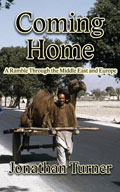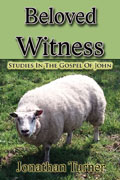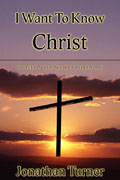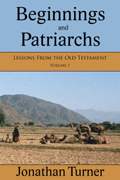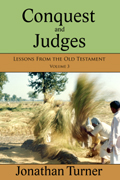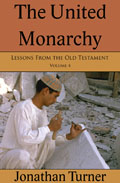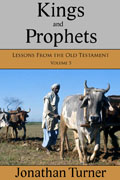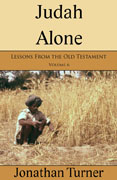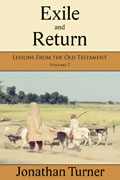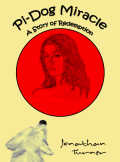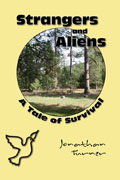Some thoughts sparked by the book by Ken Ham & Britt Beamer
I. The Observable Trend
Ham begins his book with the observation that the church buildings of Europe are mostly empty and that those in the U.S. are not far behind. Many buildings are being re-purposed or torn down. While this may be disturbing, it is hardly news. The trend has been well documented for decades. For example, Thomas C. Reeves presents an in-depth analysis of the decline of the ‘Main-line’ denominations in the United States in his book The Empty Church, The Suicide of Liberal Christianity (The Free Press, 1996).
As Ham rightly points out, however, the trend is not restricted to the ‘liberals.’ Churches from all traditions are being affected. This includes the Churches of Christ, and other Restoration Movement churches which have often thought themselves immune from the influences which bedevil other traditions. In fact, the authors of the book The Worldly Church, A Call For Biblical Renewal (C. Leonard Allen, Richard T. Hughes, Michael R. Weed, ACU Press, 1991) make the case that the Churches of Christ are especially vulnerable to the spirit of our age. It is a warning which we should take seriously.
The surprise is not that church attendance is going down, it is the age at which people begin to disengage from church. We are often told that secular colleges are to blame for the majority of children from Christian homes turning their backs on the faith. The colleges and universities are not without fault. But, after extensive surveying, Ham and Beemer concluded that two thirds of the children attending church and Sunday school are already lost to the church before completing High School. Many begin to disengage as early as Junior High. This may be the most important insight in the book. It is clear that in order to retain our young people we must work on the problem long before they leave home to attend college.
While the focus of Ham’s book is on the young (what some call the Millennial generation, birth years 1982-2003) and why they leave church, it is worth noting that the problem is not confined to the young. According to Mike Regele and Mark Schulz (Death of the Church, Zondervan Publishing House, 1995) an increasing percentage of the Baby Boom generation (birth years 1943-1960) and the generation which follows them (the Survivors, birth years 1961-1981) are also leaving the church. Nor, if things remain as they are, is there much chance of young people returning to church once they have children of their own – in spite of what they told Ham and Beemer. If there were, then the average congregation would have a large percentage of families with young children. Instead, congregations all over America are rapidly turning gray.
II. Diagnosis
The key question to ask is why are people, whether young or older, leaving church? Though there may be some generational differences the over-all reasons are probably very similar.
On the basis of his surveys Ham concludes that people disengage from church for two basic reasons:
1) They believe the Bible is irrelevant.
2) They believe the church is irrelevant.
While this is true, as far as it goes, I believe Ham misses the broader significance of what he is observing. Without understanding the true complexity of the situation, the solutions Ham proposes will not be as effective as they might. We live in a period of transition. We face not one but many, simultaneous waves of change. The period of cultural stability which we consider normative is gone for good, and it is not yet apparent what new shape our world will assume.
a) The empty buildings are not evidence of a dying church so much as they are a witness to the death of ‘Christendom.’ The truth is that many, if not most, of the cathedrals and church buildings of Europe were more an expression of culture than faith as defined in the New Testament. In the framework of Christendom one became part of the church by accident of birth rather than personal conviction. One attended church because that was the socially acceptable and expected thing to do. (On the question of whether Christianity is dying in Great Britain, two essays by C.S. Lewis are well worth reading. They are The Decline of Religion and Revival Or Decay?. Both are in God in the Dock, Edited by Walter Hooper, William B. Eerdmans Publishing Company, 1970)
Also, while people went through certain outward forms and traditions of religion, there was little impact in terms of transformed lives. Why? Because the framework of Christendom owed at least as much to the Greek philosophers as it did to the Bible. Not only did Augustine and others bring Greek rhetoric into the church, they also brought in Greek philosophy, particularly the ideas of Plato. Augustine’s syncretistic mix of biblical and Platonic worldviews held almost universal sway in the Western church until Thomas Aquinas. Aquinas’ contribution to the teachings and beliefs of the church was to modify some of Plato’s ideas with those of Aristotle. Switching from one Greek philosopher to another did nothing to change the underlying system. Nancy R. Pearcey, in her book Total Truth, Liberating Christianity From Its Cultural Captivity (Crossway Books, 2004-2005), points out that dualism is one of the chief characteristics of Greek philosophy. The Greeks drew a sharp distinction between what they called the ‘Forms’ which were good, and ‘Matter’ which was evil. This dualism found expression in Christendom in its division between the ‘Sacred’ and the ‘Secular’. The Reformation did little or nothing to change this outlook. It pervades our society to this day.
Though the United States specifically rejected the concept of a state religion, it inherited the idea of Christendom, along with its citizens, from Europe. Until fairly recently American culture has very much been shaped and influenced by the Christendom concept. This is reflected in the furor over whether the U.S. is, or ever was, a ‘Christian nation.’
With the collapse of the Christendom paradigm or framework, where citizens were ‘Christian’ by definition, the church was an extension of the state and the church regulated society, is it any wonder that people now consider the church irrelevant? If there is a dividing line between secular and sacred, and we live in a secular society, the church simply does not have anything to say which applies to people’s everyday life.
b) Another major change is the rejection of Modernism. In part, this is a reaction to an over-emphasis on reason. This over-emphasis downplayed everything outside the realm of reason such as emotion and intuition. Truth was determined by logic and what the mind could comprehend. As a result we lost the sense of the transcendence of God and the indwelling of the Spirit. Christianity became formulaic. This is reflected in the perception of many that Christianity consists of keeping a list of rules rather than a living relationship with Jesus Christ.
Now the pendulum has swung to the opposite extreme. Instead of reason, the emphasis is on experience and feeling. There are some who have gone so far as to question the validity of reason itself. As a corollary, the concept of absolute truth is also suspect. Truth is relative to the experience of the individual. In other words, we create our own reality.
In this climate the Bible is no longer looked upon as a universal standard. If people find it inconvenient or distasteful they reject it as being irrelevant.
Another consequence of the over-emphasis on reason was a direct and concerted attack on the Bible. If everything must be explained in terms of the mind and natural causes, then it follows that much of Scripture, particularly the parts which deal with miracles and the supernatural, must be rejected. Similarly, predictive prophecy is impossible. This warped framework led to the discovery of all kinds of supposed discrepancies, inconsistencies and other errors in God’s Word. It is ironic that while Postmodernists have rejected the mindset which spawned the hyper-critical and unjustified attacks on the Bible they still, to a large extent, blindly accept the conclusions of that mindset. In other words, not only do many consider the Bible irrelevant, they assume that it is full of error and not trustworthy.
c) Another challenge of our time is Multiculturalism. There was a time when there was a broad consensus about how things ought to be. Even those who did not live by them generally agreed with the moral principles of Scripture. There was a common moral framework based, in large part, on the Bible. Whether one believed it or not, knowledge of the highlights of the Bible and of salvation history suffused our culture.
This is no longer true. In spite of being a best-seller the Bible is, by and large, an unknown book. Morality is determined by consensus rather than by the external authority of Scripture. As Ham rightly points out, our society has become thoroughly pagan (p. 90). Self-interest is the determining factor in deciding what is right.
But there is more. Along with the collapse of Christendom we have lost the over-arching meta-narrative which held the culture together. Not only is the Christian story no longer the dominant one, there are now many other competing stories. We are bombarded on all sides with alternative traditions. Though people have always had the choice of whether to believe in Christ or not, it is now much easier for them to choose something else. Christ demands radical change. When self is the center, people will opt for a tradition which tells them what they want to hear.
d) The Information Revolution is at least as, and probably more, disruptive than the Industrial Revolution was. This has several implications:
- As the work landscape changes, people are being uprooted from all that is familiar. They can no longer count on spending their career in one company or even in the same industry. This uncertainty and instability can cause them to question other things which they have taken for granted – including their faith.
- People have greater access than ever to information. Liberal interpretations or outright attacks on Scripture and the Christian faith are only a few mouse-clicks away. The same goes for information about other faith traditions or religions. Pornography and other things which destroy faith and morality are readily available at little monetary cost or social risk.
- Virtual communities on the Internet are increasingly replacing the social functions of the church. Chat rooms, blogs, Face Book, Twitter and the like are how friends keep up with one another. Dating sites are where people find potential mates. Texting substitutes for conversation.
e) On top of all this is the normal change brought about by what Regele and Schulz call the Generational Cycle. Part of the reason for the decline of traditional, ‘main-line’ churches is that from 1961-2003 we were in that part of the cycle which emphasizes the spiritual life of the individual over building up the institutional church. Now, from 2004 forward, we are at the beginning of the next ‘Crisis Era.’ Already there are some interesting parallels between our time and the last Crisis Era – World War II. Though we are entering an outward looking phase of the cycle which historically benefits the institutional church, there is no guarantee that this phase will follow the same form as previous cycles. Churches cannot merely keep doing what they have always done in the knowledge that everything will turn out okay in the end.
It is not any one of these movements, but all of them together which make this a time, not only of change but, of disruptive change. Our world is in transition. Whether we like it or not, many of the assumptions by which we have regulated our lives no longer apply. The church must learn to cope and thrive in the midst of uncertainty.
III. The Remedy
What can the church do retain the people who already attend and to attract those outside of Christ? Ham suggests two remedies:
1) Defend the Word.
The first remedy Ham suggests is to teach Bible apologetics. This is a very valid point. It is important for Christians to realize that there are answers to the doubts, objections and questions which people raise about the Bible. We would do well to teach our people the historical, geographical and archaeological evidences of biblical accuracy. We should teach people about the transmission of the Bible texts and the development of the canon.
In addition, we need to teach the principles of interpretation. Many of the attacks which are leveled at the Scriptures stem from false or inconsistent methods of reading the texts. We need to point out the biases and agendas of the detractors. The burden of proof is on those who claim the Bible is inaccurate, not the other way around.
We also need to uphold the concept of authorial intent. While there may be many applications, there is only one primary meaning.
But while the Bible is true – and I mean true in an objective sense as well as the subjective sense in that it is true and applicable to individual human nature and psychology – we must be careful in how we present its truth. Since, in our Postmodern, post-Christendom age the Bible no longer enjoys a position of unquestioned authority, a dogmatic approach to teaching is unlikely to be effective. Instead of presenting truth in a take-it-or-leave-it fashion we must allow people room to arrive there on their own. While it is certainly legitimate to point out what Scripture says, we must be careful not to be dogmatic about things which are not directly stated in the Word. While we must not soften or compromise the gospel we must also not go beyond what is written (See 1 Corinthians 4:1-7).
This is a trap which Ham falls into. Though he points out that the Bible has lost its position of authority in society (p. 87-88) he still uses the dogmatic approach. For example, he goes on ad nauseam about the absolute necessity of teaching the doctrine of a young-earth. Yet, as far as I know, there is no direct statement in Scripture which says that the earth is young. It is something which is inferred. To dogmatically state, as Ham does over and over, something which Scripture does not, has the potential to undermine faith rather than build it up. The reason is that our Postmodern society decides what is true, in part, based on the perceived character of the person who delivers the message rather than objective criteria. If we say that the Word is true (as it is) yet one of our dogmatic pronouncements about what is not directly stated is proven false, it will raise questions about the truth of everything else we have said about the Word.
2) Live the Word.
Though Ham puts more emphasis on apologetics, he is correct in saying that living out our faith is more important (p. 136). There is little point in believing the truth unless the truth makes a difference in how we live our lives. Ham rightly points out (p. 121-122) that the accusation which is most often made against the church, and Christians in general, is that of hypocrisy. In other words, that they do not live by the ideals and standards which they claim are right and which they try to bind on others. Unfortunately, there is often truth to the accusation. There are at least three consequences to the failure to live according to the standards and principles of Scripture:
a) It invites the ridicule and scorn of unbelievers. As Paul wrote to the Romans, “you, then, who teach others, do you not teach yourself? You who preach against stealing, do you steal? You who say that people should not commit adultery, do you commit adultery? You who abhor idols, do you rob temples? You who brag about the law, do you dishonor God by breaking the law? As it is written: “God’s name is blasphemed among the Gentiles because of you.”” (Romans 2:21-24 NIV) The church will never have a credible witness to the world until and unless Christians display transformed lives.
b) It makes it incredibly difficult for young people in the church to choose to live faithful and righteous lives. It’s hard to swim against the tide. At the very time in their lives when young people are trying to discover who they are, what they believe and the values by which they will live their lives; at the time when they most need acceptance and a sense of belonging they are, all too often, confronted with the choice of either following their peers who claim to be Christians yet whose lives reflect anything but, or living according to Scriptural principles. The choice is made all the more difficult when adults proclaim by their own behavior that worldly ways of thinking, worldly attitudes, worldly dress and worldly speech are the norm. Christians also sometimes make the mistake of thinking that they are demonstrating love when they accept ungodly lifestyle choices in others who profess to be Christians. However, such toleration often sends the signal that lifestyle doesn’t matter.
c) It undermines the authority of Scripture and faith. Postmodernist thought has weakened the concept that Scripture is true and authoritative in its own right. At least subconsciously, people tend to decide what is true by observing those who are important to them. If Christians will not live according to biblical principles, then those who observe will conclude that the principles are not true. If they were true, Christians would behave as if they were true. And, if the principles and standards of the Bible are not true, then it casts doubt on the truth of the historical claims as well. At the least, it causes many to conclude that even if the Bible is true, it is irrelevant in daily living.
It is important, however, that we not confuse ‘living the Word’ with merely living according to a set of guidelines or conforming to a standard of conduct. It is easy to publish rules and miss the whole point. Conduct does not a Christian make. Christians are supposed to have died with Christ to sin and have been resurrected to live a new life (Romans 6). The old creature is dead and a new creature has risen in its place. Godly conduct is a natural byproduct of the new creature. Dogs behave like dogs because that is the nature of dogs. Christlike behavior which conforms to biblical standards is, by definition, the nature of Christians. If the nature of someone who calls himself a Christian does not display the nature of Christ, then it is legitimate to question whether the change from the old creature to the new ever took place. To ask for conformity to the nature of Christ apart from the death of the old nature is legalism.
In addition to the remedies Ham suggests, we need to:
3) Live as ekklesia. One of the reasons people have come to the conclusion that church is irrelevant is that they have the wrong concept of the church. Even though Ham quite correctly notes that the church is “not a physical structure” (p.125) but “a group of individuals” and the “Body of Christ” (p. 129), he consistently muddies the waters by calling buildings, churches. As long as our concept of the church is rooted in the material, we can never expect it to answer spiritual needs.
Not only have we prostituted the meaning of the word ‘church’ by using it to refer to physical structures, we have also turned it into a verb. We speak of the ‘unchurched.’ Ham quotes Barna using the phrase “had been churched” (p. 19). Presumably, to ‘church’ somebody would be to get them to join the organization. Ham also uses the phrase “doing church” (p.127, 128) as though the church is some physical activity like ‘doing the dishes.’
It is high time we recaptured the concept that the church is the assembly or community of the ‘called out ones.’ As Christians we have been called out of the world. We are to be different than our surrounding culture. We are to be in the world but not of it (John 17:14-16). We need to realize that church is not someplace we go, it is not something we do – it is something we are.
To his credit, Ham suggests that we study each passage in the New Testament which speaks of the church in order to discover what the church is supposed to be (p. 129). If we ponder on some of the metaphors which are used for the church such as body, family and household we will begin to understand that, all too often, we do not experience the kind of interaction and fellowship (koinonia) that God intended to take place within the church. It is significant that the first Christians “…devoted themselves… to the fellowship…” (koinonia) (Acts 2:42 NIV). When we learn to truly live as ekklesia and devote ourselves to koinonia, then our young people will no longer have to turn to the world for friendship, companionship and fellowship. When their social, as well as their spiritual needs are met within the body, they will have no incentive to leave. Again, to his credit, Ham mentions this aspect of the church on page 131, though he does not specifically include it in his remedies.
4) Perhaps most important of all, we need to live as covenant people. As Christians; as the people of God, we are to have a radically different worldview than those outside of Christ. Paul writes, “Do not conform any longer to the pattern of this world, but be transformed by the renewing of your mind…” (Romans 12:2 NIV) We must no longer think as the world does. We must act and react differently than those who are outside of Christ. The standard of the world is self-interest. We are called to crucify self and to follow Christ. Our true citizenship is not here but in heaven (Philippians 3:20). Though living in the world, we are strangers and aliens (1 Peter 2:11).
Not only must we reject the viewpoint and values of the world, we must also repudiate the concept of Christendom. At the core of the Greek philosophy which shaped Christendom is a distorted and false view of God. To the Greek mind, God is distant, austere, impersonal and deterministic. Such doctrines as total depravity and radical predestination are outgrowths of this view.
In its place we must return to the Hebrew (biblical) worldview in which God is near and intimately concerned with our individual lives and wellbeing. God has voluntarily limited His power in order to allow us the freedom to make moral choices. He dwells among His people in a loving, covenant relationship and by His grace empowers them to keep the covenant (Titus 2:11-14).
When we learn to live as covenant people, we will be filled with joy and hope. And, when people see the hope that is within us, they will want to know the reason for it (1 Peter 3:15).
In a sense, when we talk about the remedy to people leaving the church, we are looking at things the wrong way around. We make it sound as though it is up to us and our clever strategies to save the church. However, Christ made it clear that nothing will ever prevail against His church (Matthew 16:18). It is Christ who will prosper and build the church, not us. The real question is not whether the church will prevail, but whether the church we are a part of is really His. It is not whether Christ will fall in with our plans, but whether we will follow His. I suggest that the most important thing we can do is to study the New Testament in order to discover what God’s ideal for the church is and model our congregations after that plan. The most effective thing we can do to further the church is to be fully dedicated to Christ and totally obedient to what He has revealed in the Scriptures. We may sow and water, but it is He who gives the increase (1 Corinthians 3:6-7).
IV. Two Helpful Metaphors
As we adjust to the death of Christendom and look toward an as yet uncertain future there are two biblical metaphors which can help us through the transition.
1) Remnant
On page 87, Ham uses the word ‘remnant’, but does not develop it. The Bible uses the concept of the remnant to paint a very powerful picture of those who remain faithful in spite of the collapse of faith in the broader culture. Jezebel may be on the throne, actively killing off the prophets; to all appearances it may seem that faith is extinguished, yet God has reserved 7,000 for Himself who have not bowed down to Baal (1 Kings 19:18). The land may be invaded and the old order overturned, yet a remnant of God’s people still remains (2 Kings 19:30-32).
What is particularly significant in this picture of the remnant is that it is from the remnant that renewal and restoration comes. For example, read the book of Haggai and Zechariah, chapter 8.
The problem with the metaphor of remnant is that it assumes a culture and community of faith as the norm. That being the case, it is more relevant to the church rather than to society as a whole. The world has invaded the church. God will use the faithful remnant which survives, to restore, revitalize and reclaim it.
2) Exile
While the metaphor of a remnant pictures hostile forces invading the community of faith, the Bible uses another metaphor which turns the imagery around. In the metaphor of exile, instead of aliens intruding into the homeland of the faithful, it is the faithful who are living in enemy or alien territory. In this view we are a displaced people.
Both the writer of Hebrews and the Apostle Peter point out that Christians are citizens of a different country. They do not belong to this world. In this sense, the death of Christendom is a good thing. While society as a whole embraced some sort of theism and a set of ethics and morals which roughly coincided with those of Christianity, it was easy to get comfortable in our foreign lodgings. Now that the church has been marginalized; now that Christianity is out of favor (true followers of Christ almost always have been, even within Christendom) the lines are clearer.
The truth is that we do not belong here. We are strangers and aliens in a foreign land (1 Peter 2:11). We are at war with the basic principles of this world (2 Corinthians 10:3-5, Colossians 2:8). We’ve been sent here on a mission. We are a bridgehead into enemy territory. We need not fear the enemy. As long as we remember our true citizenship, they have every reason to fear that we, in Christ’s strength, will overturn their way of life.
V. Additional Resources
As I tried to say earlier, the most important thing we can do to help our congregations be effective, is to model them after the church in the New Testament. The best book I know of on the subject is Radical Restoration, A Call for Pure and Simple Christianity (F. LaGard Smith, Cotswold Publishing, 2001). It is particularly meaningful to me because the author writes from within the same spiritual heritage as I share – that of the Restoration Movement.
Three more books written from that perspective which I have found helpful are:
Discovering Our Roots: The Ancestry of Churches of Christ (C. Leonard Allen, Richard T. Hughes, ACU Press, 1988)
The Worldy Church, A Call For Biblical Renewal, Second Edition (C. Leonard Allen, Richard T. Hughes, Michael R. Weed, ACU Press, 1991)
The Cruciform Church, Becoming a Cross-Shaped People in a Secular World, Second Edition (C. Leonard Allen, ACU Press, 1990)
Two other books about recapturing the biblical model which are worth reading are:
The Open Church, How to Bring Back the Exciting Life of the First Century Church (James H. Rutz, The SeedSowers, 1992)
The Problem of WineSkins, Church Structure in a Technological Age (Howard A. Snyder, Inter-Varsity Press, 1975)
The most helpful book in understanding the waves of change which we are encountering is:
Death of the Church (Mike Regele with Mark Schulz, Zondervan Publishing House, 1995)
A sequel to the above book which discusses how to navigate through radical change is:
Crossing The Bridge, Church Leadership in a Time of Change (Alan Roxburgh with Mike Regele, Percept Group, Inc., 2000)
